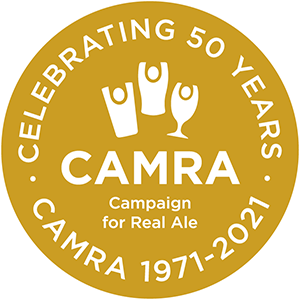Docks
Shropshire - Selattyn
One star - A pub interior of special national historic interest
Listed Status: Not listed
Glyn RoadSelattyn
SY10 7DH
Tel: (01691) 653347
Website https://www.thedocksselattyn.co.uk/
Facebook https://www.facebook.com/TheCrossKeysSelattyn
Real Ale: Yes
Real Cider: Yes
Lunchtime Meals: Yes
Evening Meals: Yes
View on: Whatpub
A refurbishment has recently been carried out which requires a re-assessment.
Please note - the photos are therefore out of date and the description is one written before the recent changes.
A traditional village pub situated just a mile from the Welsh border and Offa’s Dyke. The pub originally doubled as village shop up until 1994, hence the large window on the right-hand side of the building. Having only had three owners since 1939, the historic heart is the delightful small bar at the rear right beyond a tiled and dado panelled corridor.
It has some Victorian or early 20th-century fittings including the high bar counter and red and black quarry-tile flooring; the fireplace is perhaps of about 1970. Across the corridor is the Music Room, another atmospheric space with red quarry-tiled flooring. It is so called as it hosts live folk music on Thursdays and Fridays.
On the right are two further reception rooms, comprising a snug and small dining room which have been brought in to use whilst being renovated sympathetically and furnished in a contemporary style. A large function room occupies the former stables. The pub’s nickname comes from wartime and subsequent austerity, and apparently means black market goods (docks, of course, being a major source thereof): no doubt this wasn’t the only pub in the land where such wares were traded behind closed doors!
A refurbishment has recently been carried out which requires a re-assessment.
Please note - the photos are therefore out of date and the description is one written before the recent changes.
A modest whitewashed building just a mile from the Welsh border which up to 1994 used to double as the village shop (see the big window on the right). The two original pub rooms and passageway are little changed due to there having been only two owners since 1939 - Bill & Peggy Jones ran the pub from 1939 to 1989 and Phil and Hilda Rothera from 1989 to 2015. However, in 2017 a significant refurbishment took place in order to attract the food trade and the floor area of the modern parts is now greater than the original rooms and passageway.
The front door leads into a small lobby with red tiled floor and on the right is a door with the number ‘2’ on it which leads to the what is called the ‘Music Room’ as this was the venue for Irish musicians every Thursday night (check). The left hand door is not in use but beyond it is a dining room - see later). The Music Room has a red tiled floor, good leather-covered very old fixed seating round the walls and an inglenook-style fireplace possibly from the 1930s and there is a piano. A doorway leads to a passageway with a red tiled floor and old dado panelling still with a door at the end but this is now permanently open making the modern parts clearly visible.
On the other side of the tiled passageway in the small public bar with a red and black tiled floor and old tongue and groove dado. The bar has a Victorian panelled counter and old top and the handpumps have a date of 1947 on them. The only recent change has been to the bar back fitting which was of four sections but the left hand part (which was a post-war addition) was removed in 2017 to create a doorway so staff could serve customers at a new small bar behind. The central upper part of the bar back fitting is genuinely old with mirrored panels but below it are some 1960s changes with modern shelves on a brick base so it looks like casks were stillaged here in the past.
The right hand section of the bar back looks old but not as old as the central section. In addition there is another section on the right hand wall which is definitely post-war. The public bar has fixed seating around the walls that might date from before or just after the war and the stone fireplace dates from c1970. This still remains very traditional with its Britannia type tables and log fires in winter.
Further back are two rooms that have been brought into use in modern times - a small games room on the left, formerly a living room; and In what used to be the stables there was a large entertainments room which could hold up to 90 and was used for Irish Set Dancing on a Thursday night before the musicians appear, and hosted occasional folk nights. It could also be converted to a skittle alley including a ball return made from plastic drain pipes!
The 2016-7 changes saw the ‘outside’ toilets replaced by new ones situated in the former shop area; the former games room (with a locked door from the front lobby) is now a small modern dining room; the former function room / skittle alley at the rear has been converted into a large dining room; and a new small bar added between the public bar and the new large dining room to serve diners.
 Pub Heritage
Pub Heritage 